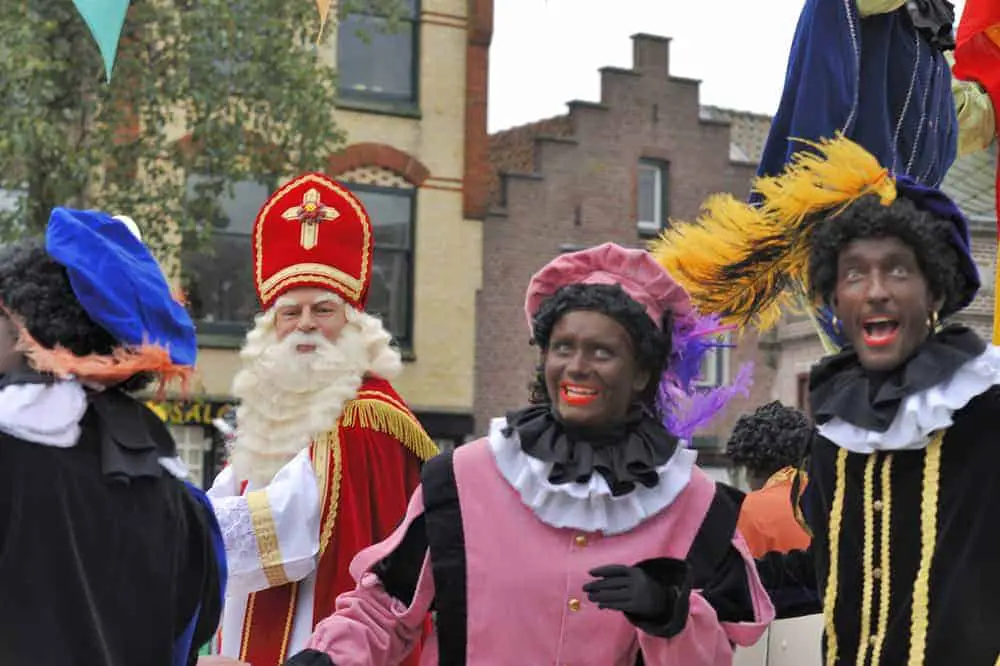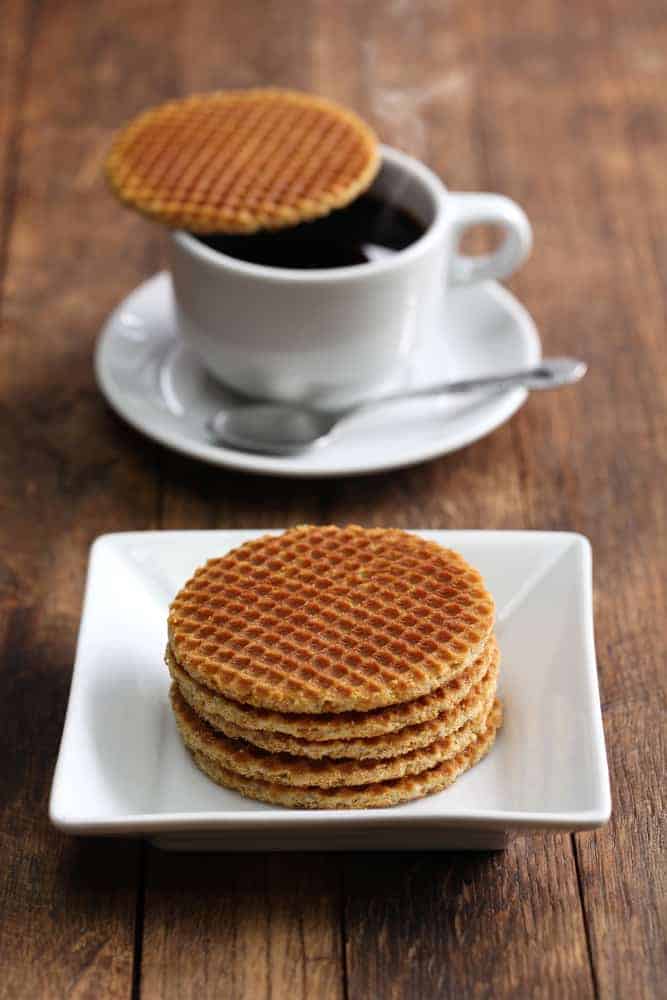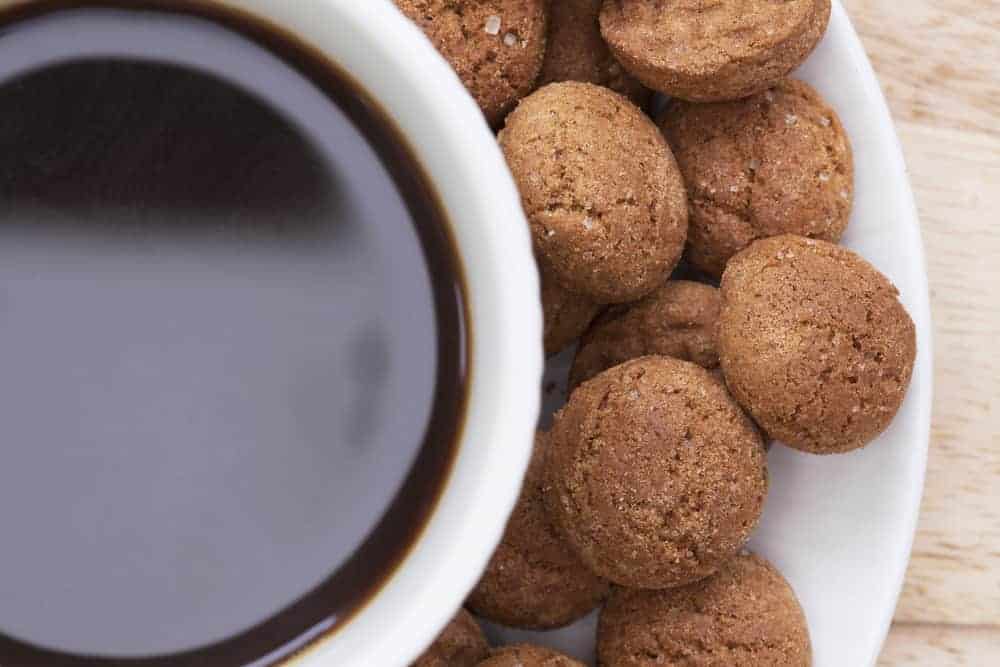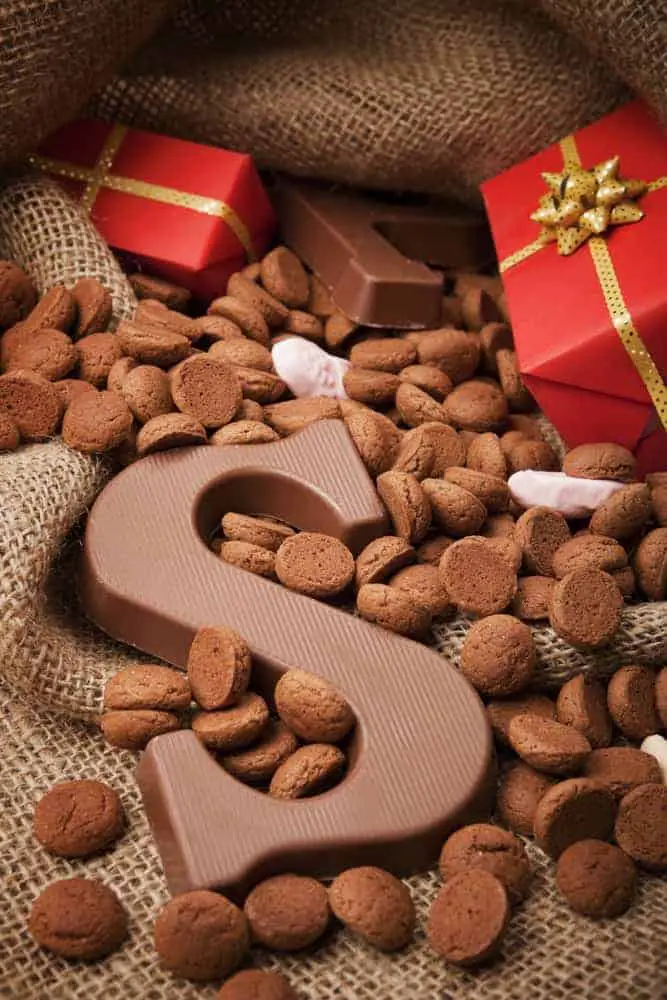For the Dutch, Christmas starts with the arrival of Sinterklaas which is a beloved tradition in the country. Sinterklaas (the holiday) takes place on the fifth of December every year and is dedicated to Sinterklaas (the person). The Dutch tradition of Sinterklaas is a beloved holiday with its own customs and foods.
Contents
Celebrating the Arrival of Sinterklaas
Sinterklaas is an elderly man who wears red robes, carries a bishop’s mitre and rides a white horse. His horse is named Amerigo after the Italian explorer who gave his name to America, Amerigo Vespucci. Although Sinterklaas has the same historical roots as Santa Claus, namely St. Nicolas, Sinterklaas has his own holiday in The Netherlands.
Starting with the second week of November, Sinterklaas and his servants, the Black Peters, arrive in the Netherlands on their boat from Spain. They pick a different port in the Netherlands every year so that it’s all equitable for the whole country. Traditionally Sinterklaas lives in Madrid in Spain. No, freezing North Pole for him. Like all good Dutch people, he’s into sangria and sunshine.
The Black Pete Controversy
Sinterklaas also has no use for elves. Instead he has servants called Black Peters (“zwarte piet”) who are Moors from Spain. Since about 1850, Black Peter have been represented by white people dressed in blackface, with curly black wigs, gold hoop earrings, bright red lips and “Moorish” clothing. Zwarte Piet carries Sinterklaas’ bags, distributes sweets and generally entertains the kids who come to visit Sinterklaas.
Racist much? Not according to the Dutch.
The vast majority of Dutch people insist the Black Peter imagery is neither racist nor a reference to slavery and Dutch colonial times. Opponents of Black Peter have voiced their concerns, yet most Dutch still dismiss them as killjoys..
According to my friend who blogs at Finding Dutchland, criticising this Dutch tradition is one way to real piss off the locals. Another friend who lives in the Netherlands has looked at the issue of Black Pete and racism and ways the debate is progressing. Even the United Nations, with all of its do-gooding fervour, has waded into the controversy. The former Dutch colony of Surinam has had its own Sinterklaas controversy.
There has been some small change though. In Amsterdam last year, the Black Peters weren’t black but sooty. They apparently got dirty coming down the chimney. In some places, they have gone with different coloured Peters, such as ‘cheese’ Petes who are coloured yellow, or stroopwafel Petes who are striped light brown like the famous Dutch caramel waffles.
The arrival and procession of Sinterklaas and the Black Petes is always televised. It’s a really big deal in the Netherlands with a whole set of Sinterklaas traditions, such as special songs and cakes to celebrate his arrival. Sinterklaas rides on the roofs at night and sends his Black Peters down the chimney with gifts for the children. In some families, children get weekly presents from Sinterklaas’ arrival until December 5th (Sinterklaas the holiday).
Sinterklaas and the Black Peters head back to Spain on December 6th from Rotterdam. They probably head to the South of Spain to stake out their spots poolside after an exhausting month of celebration.
So, what about Santa Claus?
On Christmas Eve, many Dutch children believe that Santa Claus (or Christmas Man “Kerstman”) comes from Lapland and delivers more presents. So Dutch kids get lots of presents in December and potentially from two different variations of St. Nicholas. I’d say they make out like bandits. Christmas Day itself is a quiet religious affair spent at family and church.
The beloved movie, Miracle on 34th Street, confused the issue when it had a little Dutch girl sing the Dutch Sinterklaas song to Santa Claus. That cute little kid would not have associated the Sinkterklaas song with the American Santa. Hollywood license and all that.
Spice Cookies and Sinterklaas
When Rachel from Rachel’s Ruminations came to visit me in November, she brought along some Kruidnoten (ginger spice cookies) which are traditionally associated with Sinterklaas. She brought two bags of this Dutch Christmas food and they were gone in two days. I blame the children for inhaling them before I could even get any photos.
The ginger spice cookies we tried were covered in milk or dark chocolate so they were even better than the kruidnoten by themselves.
Chocolate Letters
In the bag of presents that Sinterklaas brings for Sinterklaas, Dutch children may find a chocolate letter initial standing for the first letter of their name. Alternatively, you could do an initial like “M” for moeder (mother). This tradition started in the 19th century when people would identify their covered Sinterklaas gifts with a letter made in bread dough. Eventually by the 20th century, the Dutch moved onto the tastier chocolate letters.
These chocolate letters are only on sale in The Netherlands at Sinterklaas time. People must really stock up on their yearly intake of chocolate letters because upwards of 30 million chocolate letters are sold and there are only about 17 million people in the whole country!
Chocolate letters are easier to find in the United Kingdom because I saw them at Hema, the Dutch version of the general goods European stores such as the Danish Tiger or the Swedish Ikea Marketplace.
Who was Saint Nicholas anyway?
Sinterklaas is based on Saint Nicholas, a Christian Bishop born to a wealthy family in the 3rd century AD in a Roman town in what is now Turkey. Various countries claim to have the body of St Nicholas which was stolen and put in a church in Bari (Italy), a church in Venice (Italy) and an abbey in Kilkenny (Ireland). A new wrinkle was introduced when Turkey claims to have found St. Nicholas’ tomb.
SPREAD THE WORD! PIN THIS TO YOUR TRAVEL PINTEREST BOARDS FOR FUTURE REFERENCE!
This site also generates income via partnerships with carefully-curated travel and lifestyle brands and/or purchases made through links to them. More information may be found on our Disclosure Policy.






